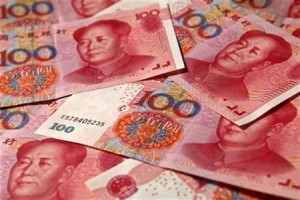 Beijing Population 2013
Beijing Population 2013
The current population of the city of Beijing, China is estimated to be about 20,693,000, which is an increase of about 5.5% from the last record of the population. Despite being the capital city of China, Beijing is not the most populous city in the country. Shanghai is a more populous city than Beijing. Based on the total land area and the total population of the city, the population density of Beijing is estimated to be about 3,300 people per square mile.
Population Growth in Beijing
Beijing will see an increase of senior citizens every year until 2020. This highlights the huge challenge in caring for the elderly. The city is faced with rapid growth in its elderly population, with 400 more people reaching the age of 60 every day, according to a report released by the city government. The report said nearly 2.63 million registered Beijing residents were 60 years old or above in 2012, while the total number of inhabitants stood at 12.98 million. Every 100 residents aged 15 to 59 had the burden of looking after 29.4 elderly people in 2012, but the figure was 24.3 in 2008, state-run Xinhua reported, citing figures. Compared to statistics in 2006, the registered population aged 60 or above has increased by 605,000, accounting for more than 60 per cent of the total increase in the number of registered residents. In 2010, nearly 178 million people in China were 60 years of age or older, accounting for 13.26 per cent of the total population. The number will double by 2030 mostly attributed to the demographic crisis. An official report in 2010 said China will overtake Japan to become the world’s most aging society by 2030.
Demographics of Beijing
According to the census conducted in 2010, the largest ethnic group in Beijing is the Han Chinese ethnic group, which makes up about 96% of the population. The Manchu and Hui ethnic groups each make up about 2% of the population. Due to estimates of percentages, the Mongol people make up about 0.3% of the population. Only about 10% of the population is under the age of 14 years, while about 11% of the population is 65 years or older. This means that the remaining ages between 15 and 64 make up about 79% of the population. Also, those in Beijing speak a specific dialect of Mandarin, specific to the city. Lastly, the average life expectancy is about 81 years. The male expectancy is around 79 years, while the female life expectancy is about 83 years.
Religion in Beijing
As is true with anywhere in China, the population of Beijing is granted the freedom to choose whatever religion he or she would like to practice. The three major Chinese religions are Confucianism, Buddhism, and Daoism. Many people decide to pick a few principles from each school of thought and practice solely those principles. With that said, very few people actually identify as Buddhist. People will visit the Buddhist temples, but not claim to be Buddhist. In fact, the most widely practiced religion in China is Islam and then Christianity. There are actually over 40 mosques total in the city of Beijing.
Sports in Beijing
The most recent major sporting event held in the city of Beijing was the 2008 Summer Olympics. Other than that though, Beijing has been known to hold many championship tournaments over the years, including the 1961 World Table Tennis Championships. Some of the major club teams in the city include the Beijing Baxy and the Beijing Institute of Technology FC. Both of these teams perform in the Chinese Football Association Jia League. Also the Beijing Ducks perform in the Chinese Basketball Association, and the Beijing Shougang perform in the Women’s Chinese Basketball Association. Some major sporting venues in the city include the National Stadium, otherwise known as the Birds’ Nest and the National Indoor Stadium.
 Economy of Beijing
Economy of Beijing
The city of Beijing ranks second in the country’s industrialization due to things such as advanced machinery, textile, and petrochemical sectors. The city is only ranked behind the city of Shanghai. One example of the industrialization is the Shih-ching-shan Iron and Steel Works Company, which produces a majority of the country’s steel. Also, the central banking system of China is centered in Beijing.
The Aging Population of Beijing China
Historical Population of Beijing
Overall, the population of Beijing has continued to grow since at least the mid 20th century. In 1953, the population was recorded at about 2.768 million. Now, the population has grown to almost 21 million.
| Year | Population |
| 1953 | 2,768,149 |
| 1964 | 7,568,495 |
| 1982 | 9,230,687 |
| 1990 | 10,819,407 |
| 2000 | 13,569,194 |
| 2010 | 19,612,368 |


